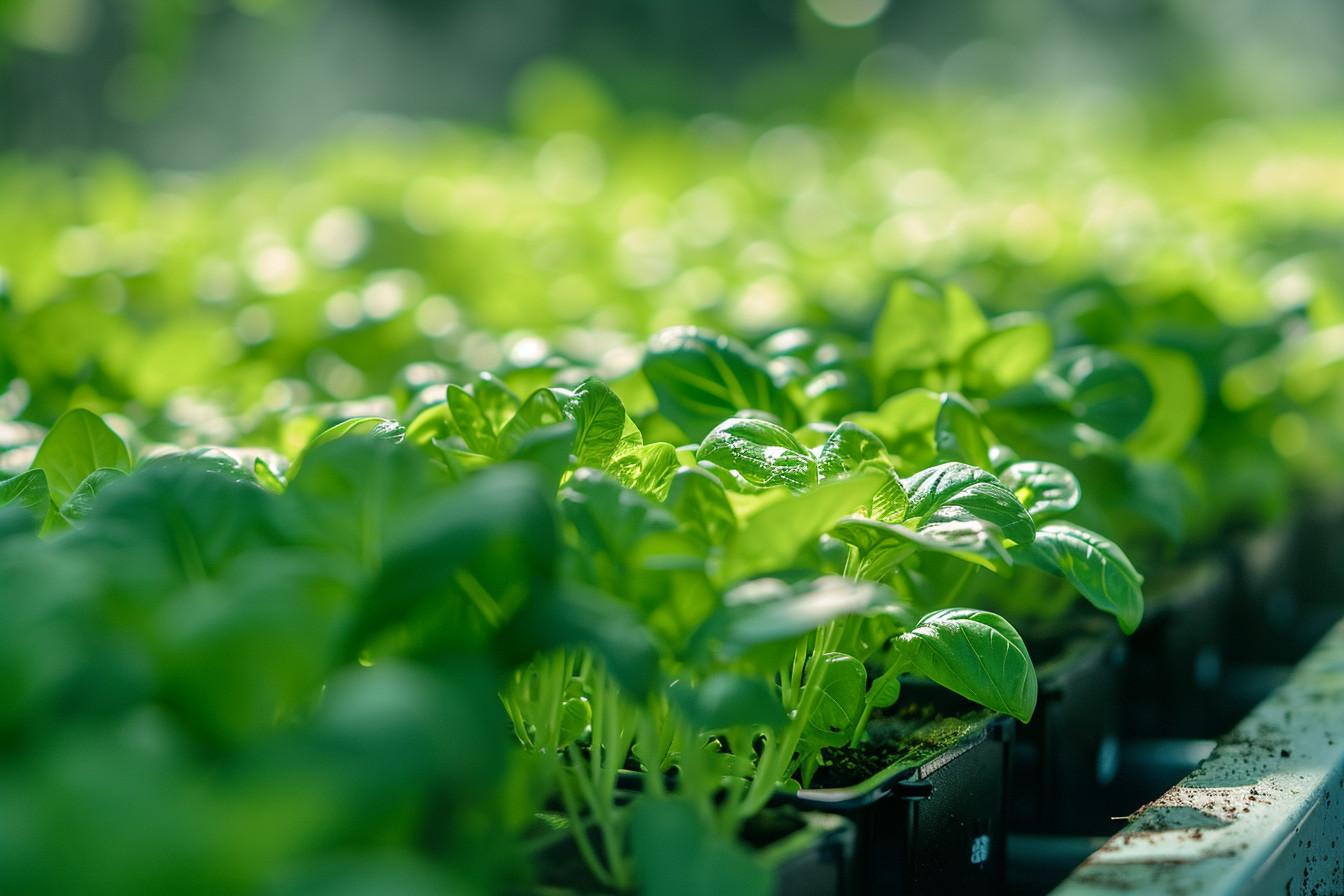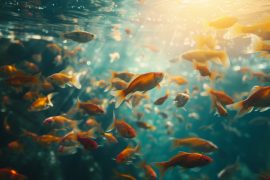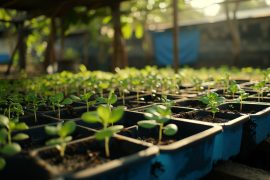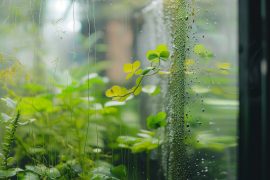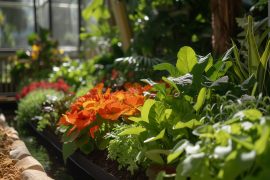Ever found yourself mesmerized by the idea of growing your own veggies and fish together in a harmonious dance of aquaponics? It’s like hitting the garden jackpot, right? But before you dive in, there’s a bit to learn. Trust me, I’ve been there, and I’m here to help you sidestep the common blunders that can turn your aquaponic dreams into a wilted reality.
Choosing the wrong fish
As I wander into the serene world of aquaponics, I’m reminded how the right fish can create a symphony of life beneath the calm surface. It’s not just about plucking any fish from the pet store and hoping they thrive; choosing the right fish is crucial.
When I started, I was unaware that some fish are more robust and adaptable to the varying conditions of an aquaponics system. Here’s a vital piece of info I wish I knew back then: cold-water fish like trout can’t handle the warmer temperatures that most vegetables prefer. On the flip side, tilapia thrives in warm water, making them a favorite for aquaponic gardeners. Below is a list that might help you decide:
- Tilapia: Hardy and fast-growing
- Catfish: Tolerant of low oxygen and high nutrient waters
- Goldfish: Easy for beginners, but not for eating
- Koi: Great for ornamental purposes, also not for eating
One of my first mistakes was bringing in a school of fancy goldfish, charmed by their flowing fins. Little did I know, they required more care than I was ready for, and their lack of utility in the system beyond their aesthetic felt a bit wasteful in hindsight.
Did you know that the fish-to-plant ratio is sacred in aquaponics? I’ll let you in on a secret—it’s not just the type of fish but also their number that matters. Here’s a bit of technical know-how made simple: too many fish will overwhelm the system with waste, too few, and your plants won’t get enough nutrients. It’s a balance that might take a few tries to get right, and that’s okay.
If you’re like me, drawn to the technical side but seeking simplicity, you’ll appreciate knowing the specifics without getting bogged down in jargon. For example, you should aim for a ratio that supports 1lb of fish for every 5-10 gallons of water.
Let me share a brief story. A friend once stocked his tank with bass, lured by the promise of a hearty meal. He quickly realized that bass were too aggressive and disrupted the tranquil harmony he sought in his garden. He switched to channel catfish and found his zen, alongside a bountiful aquaponics system.
Overstocking the system
When I first dived into the serene world of aquaponic gardening, I imagined my system as a self-sustaining oasis brimming with life. However, overstocking, I learned, is a beginner’s trap that can disrupt the peaceful balance we aim to create. Filling my tank with too many finned friends seemed like a surefire way to boost my system, but the harmony of my garden was at stake.
It’s tempting to see empty space in our systems and think it needs filling. After all, more fish means more nutrients, right? But aquaponics thrives on a delicate ecological balance — too many fish can lead to elevated ammonia levels and murky waters, disturbing our tranquil garden space. It might also stress the fish, going against the calm I desire in my connection with nature.
The tech specs are crucial here. A simple guide to maintain this balance is ensuring you have enough water for the fish you stock. From my forays and the shared experiences of fellow enthusiasts, keeping to a fish-to-water volume ratio prevents the system from becoming overwhelmed. For newcomers, here’s an easy-to-remember rule:
| Fish Weight (lb) | Water Volume (gallons) |
|---|---|
| 1 | 5 to 10 |
Case in point, a friend of mine, enamored by his burgeoning aquatic family, added more fish than his system could handle. The result? A spike in algae growth that turned his crystal-clear waters into a soup-like mess. In a panic, he reached out for advice. We worked together to rehome some of his aquatic buddies, finding a balance that restored clarity and peace to his garden.
Technical jargon aside, visual cues can be our greatest allies. If the fish are always gasping at the surface or constantly hiding out of fear, it’s a sign that’s hard to miss. My policy is to observe my fish regularly — if they seem stressed or the water clarity isn’t up to par, I take that as nature’s way of waving a red flag.
Neglecting water quality
In the world of aquaponics, water isn’t just a commodity; it’s the lifeblood of the system. Keeping a close eye on water quality is just as crucial as choosing the right fish. And trust me, it can be tempting to let things slide, especially when your plants are thriving and the fish seem happy. But here’s the thing, the purity of your water is the cornerstone for both the health of your fish and the success of your plants.
From personal experience, I’ve learned that monitoring the pH level is non-negotiable. Varying outside 6.8-7.2 can spell trouble. Now, some folks might find adjusting pH levels a bit tricky, but it’s all about balance. When I first started, I got myself a simple pH testing kit, one of those with the color charts, and it made my life a lot easier.
Then there’s the matter of the nitrogen cycle. This cycle is like a full-fledged Broadway production with nitrifying bacteria as the stars. They convert ammonia from fish waste into nitrates that plants can use. But if the cycle is off, it’s like missing the lead actor on opening night—nothing works quite right. To keep these bacteria happy, maintaining a consistent water temperature and avoiding chemical treatments that can harm them is the secret.
Let’s not forget about dissolved oxygen. I’ve seen cases where fish are gasping at the surface, which means oxygen levels are way too low. Installing an air pump was my game-changer, ensuring my underwater buddies had enough of that invisible yet vital element.
Now about those nitrates I mentioned earlier. It’s easy to overlook their levels. I remember visiting a fellow aquaponic enthusiast who learned the hard way that high nitrate levels could turn lethal for fish. He’d ignored his system for a bit too long, and sadly, his fish paid the price. After that, he began regular nitrate testing, balancing the fish load with plant capacity to ensure nitrates stayed in check.
And here’s a starter tip: water clarity is a quick visual cue. The moment I spot murkiness or debris, I’m on alert. It could mean overfeeding, decaying plant matter, or a filter that’s due for a clean.
Ignoring pH levels
pH levels in aquaponic systems are like the pulse for your plants and fish – they indicate the health and balance of your ecosystem. I’ve seen many new aquatic gardeners overlook this vital aspect. The perfect pH zone for most aquaponic systems ranges between 6.0 to 7.0, a neutral ground where both fish and plants happily co-exist.
Remember, fish waste generates ammonia which is great for your plants but this process also acidifies the water over time. If you don’t keep an eye on it, the pH can drop to levels where it can stress or even kill your fish, and that’s quite the opposite of the peaceful gardening journey you’re after.
There was one time early in my aquaponics journey where I left my system unchecked for too long. The fish looked lethargic and the plants weren’t as vibrant. It turned out, the pH had dipped below 6.0, and I was on the verge of crashing my system. Thankfully, I learned my lesson. Monitoring pH doesn’t just prevent disasters; it keeps your garden serene and your mind at ease.
You’ll want to test your water regularly – once a week at the minimum. It’s not as complicated as it sounds. Simple pH test kits or digital pH meters do the job without a hitch. I advise using a digital meter for more accurate readings. And consistency is key – same day, same time helps you spot trends before they become problems.
Adjusting pH can be a bit tricky. You can use things like calcium hydroxide or potassium hydroxide to raise pH, but always add these in small amounts. I’ve found adding a little, then waiting to see the effect and adjusting as needed, to be the best approach. Quick changes to pH can shock your plants and fish, so slow and steady wins the race.
Buffering the pH is another technique you should know about. It’s like setting up a safety net to prevent big swings in pH. I usually use crushed coral in my grow beds which releases calcium carbonate slowly over time, helping to stabilize the pH levels.
And here’s a pro tip: keep a detailed log of your pH tests. You can spot patterns over time and it makes it easier to adjust your routines accordingly. I recommend checking at different times of the day to get a good overview, as pH can fluctuate with temperature and light.
Skipping the cycling process
Starting an aquaponics system is like embarking on a tranquil journey through the fundamentals of nature’s cycles. It’s easy for beginners to overlook one of the most natural yet crucial stages: the cycling process. This term might sound technical but bear with me; I’ll make it simple.
Cycling is essentially the period it takes to establish a balanced, nitrogen-converting bacterial colony in your system. It’s these invisible helpers that turn the ammonia from fish waste into nitrates, essentially food for your plants. It’s a serene dance between the elements of your aquatic ecosystem. Imagine skipping this step is like trying to plant a garden without preparing the soil first—nothing would flourish.
When I first started, I’ll admit, I was tempted to cut corners. I put the fish and plants together too soon, and the harmony I sought in my garden turned into a bit of chaos. Fish were stressed, and plants struggled to grow. So here’s an example straight from my log to illustrate the importance of patience:
| Aspect | With Proper Cycling | Without Proper Cycling |
|---|---|---|
| Fish Health | Thriving | Stressed |
| Plant Growth | Robust | Stunted |
| Water Quality | Stable | Fluctuating |
| Overall Balance | Achieved | Compromised |
Some fellow enthusiasts believe that diving right in can speed things up, but the fact is, rushing the cycling phase can lead to high levels of toxic ammonia and nitrites. These are as harmful to your fish as they sound.
Instead, you have a couple of options. You could go for the fishless cycling method where you add ammonia manually and let nature take its course, or introduce a batch of hardy fish that can tolerate the initial conditions, often referred to as cycling fish. It’s like telling a gentle story to your system, allowing each character to find its place rather than forcing an unexpected plot twist.
The process takes anywhere from 2 to 6 weeks, sometimes longer. It’s a true test of patience for any gardener, but the rewards are well worth it. Monitor your ammonia, nitrite, and nitrate levels during this phase. Maintain a journal about the progression, noting any spikes or declines.
Final Thought
So there you have it! Keeping an eye on pH levels and not skimping on the cycling process are key to a thriving aquaponic system. Remember, patience is your best friend in the world of aquaponics. It’s all about giving your system the time it needs to balance out naturally. Trust me, your fish and plants will thank you for it. Stick with it, keep testing, and you’ll be on your way to becoming an aquaponic guru in no time. Happy gardening!
